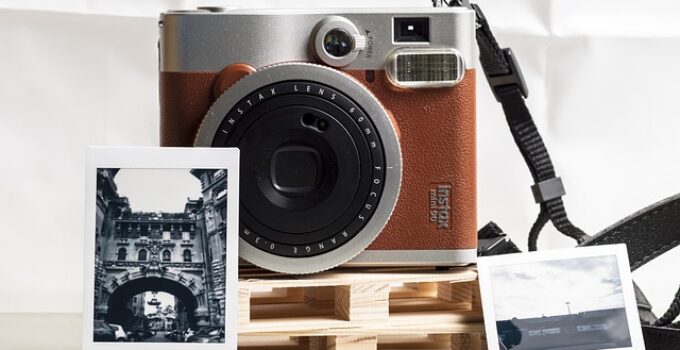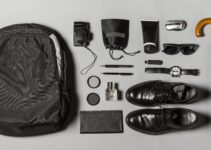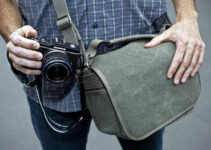Table of Contents
ToggleEver wondered how to attach a strap to your Instax Mini Evo?
Adding a strap to your Instax Mini Evo not only enhances its portability but also adds a stylish touch to your instant photography setup.
Whether you’re heading out for a day of capturing memories or just want to keep your camera secure, a well-attached strap can make all the difference.
The process is straightforward and ensures your camera stays close and accessible.
With just a few simple steps, you can customize your shooting experience and carry your Instax Mini Evo with ease. Here’s a guide to help you get started.
Here how to put wrist strap digital cameras?
Can you attach strap to instax mini Evo?
Yes, you can attach a strap to the Instax Mini Evo. The camera features two small metal loops on the sides, designed specifically for attaching a strap. To attach the strap, follow these steps:
- Prepare the Strap: Ensure you have a compatible strap that fits through the metal loops. Some straps come with small metal clips or rings for easy attachment.
- Align the Strap: Thread the strap through one of the metal loops. If your strap has clips, open the clip and attach it to the loop. For straps without clips, simply thread it through and tie a secure knot if needed.
- Repeat for the Other Side: Attach the other end of the strap to the second loop in the same manner.
- Adjust for Comfort: Adjust the strap length as needed for comfortable carrying.
This setup makes it convenient to carry your Instax Mini Evo while keeping it secure.
Things to know before attaching strap to instax mini Evo
Before attaching a strap to your Instax Mini Evo, consider the following:
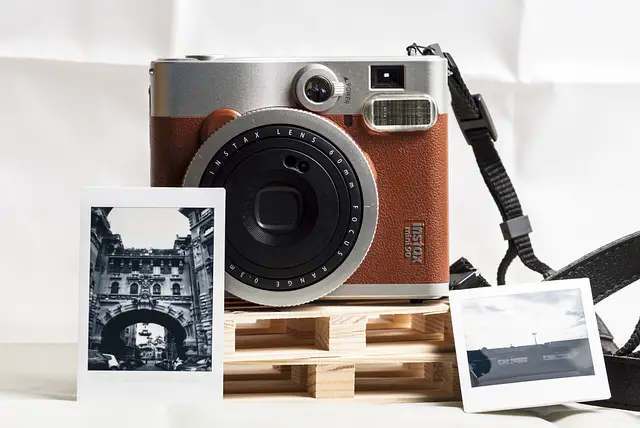
- Strap Compatibility: Ensure the strap is designed for use with cameras and fits the small metal loops on the sides of the Instax Mini Evo. Some straps may be too wide or too thick, affecting functionality.
- Attachment Method: Check whether the strap uses clips, rings, or a simple threading method. Clips can make attachment easier and more secure, while threaded straps might require extra care to avoid knots.
- Strap Length: Adjust the strap length to suit your carrying preferences. Too short might be uncomfortable, while too long could lead to the camera swinging excessively.
- Material and Durability: Opt for a strap made of durable material to ensure it can withstand regular use without fraying or breaking.
- Ease of Use: Make sure the strap attachment doesn’t obstruct the camera’s controls or access to the film compartment.
Considering these factors will ensure a secure and comfortable setup for your Instax Mini Evo.
How to attach the strap to Instax Mini Evo?
Attaching a strap to your Instax Mini Evo is straightforward:
Here, do professional photographers use camera strap?
- Locate the Metal Loops: Find the two small metal loops on the sides of the camera, which are designed for strap attachment.
- Prepare the Strap: Ensure your strap is compatible with camera use and has either clips or a threadable end. If using a strap with clips, open them.
- Attach the Strap:
- For Clips: Simply clip each end of the strap onto the metal loops. Ensure the clips are securely fastened.
- For Threadable Straps: Thread one end of the strap through a metal loop. Pull it through until it is secure. Repeat this process for the other end.
- Adjust Length: After attachment, adjust the strap length for comfort and ease of carrying.
- Check Security: Make sure the strap is securely attached and does not obstruct the camera’s functionality.
This process ensures your Instax Mini Evo is ready for convenient use.
Does the Instax Mini Evo come with a strap?
The Instax Mini Evo does not come with a strap included in the box. While the camera is designed with metal loops on the sides for strap attachment, a strap is not part of the standard accessories.
This allows users to select a strap of their preference, whether for style, comfort, or durability.
If you want to use a strap with your Instax Mini Evo, you’ll need to purchase one separately. There are various options available, including adjustable straps, wrist straps, and decorative lanyards.
When choosing a strap, make sure it’s compatible with the metal loops on the camera and made of durable materials to ensure secure and comfortable carrying.
Adding a strap can enhance convenience and prevent accidental drops, making it easier to carry and access your Instax Mini Evo while on the go.
How to attach strap to instax mini Evo?
To attach a strap to your Instax Mini Evo, follow these steps:
- Find the Metal Loops: Locate the two small metal loops on either side of the camera. These loops are designed for strap attachment.
- Prepare the Strap: If your strap has clips, open them. If it’s a threaded strap, ensure it is properly threaded or has the necessary hardware.
- Attach the Strap:
- With Clips: Simply clip each end of the strap onto the metal loops. Ensure the clips are securely fastened.
- With Threaded Ends: Thread one end of the strap through one metal loop and pull it through until secure. Repeat with the other end on the second loop.
- Adjust the Length: After attaching, adjust the strap length to fit your comfort level.
- Check Stability: Ensure the strap is securely attached and does not interfere with camera functions.
This setup will allow you to carry your Instax Mini Evo comfortably and securely.
7 Tips to attach strap to instax Evo
1. Choose the Right Strap
Select a strap that is compatible with the Instax Mini Evo.
Here, how to attach camera strap lumix?
Look for straps designed for cameras with small metal loops. Consider the strap’s material, length, and style based on your preferences and needs. A strap with adjustable length or padding can enhance comfort and usability.
Ensure the strap is durable enough to securely hold the camera, avoiding materials that might fray or break easily. This will ensure a more secure and comfortable carrying experience.
2. Check Metal Loops
Before attaching the strap, examine the metal loops on the sides of the Instax Mini Evo.
Ensure they are clean and free from debris. The loops are designed to fit standard camera straps, so make sure they are in good condition to avoid any issues during attachment. Inspecting the loops beforehand ensures a secure and stable connection, preventing any potential problems with strap attachment or camera stability.
3. Align the Strap Properly
When attaching the strap, align it correctly with the metal loops. For straps with clips, ensure the clips are oriented properly to fit into the loops without forcing them.
For threaded straps, thread the strap through the loop in the correct direction, ensuring it goes through smoothly without twisting or kinking. Proper alignment helps secure the strap firmly and prevents wear and tear on both the strap and the camera.
4. Secure the Strap Firmly
Ensure that the strap is attached firmly to the metal loops. For clips, make sure they are fully closed and securely fastened.
For threaded straps, pull the strap tightly through the loops and ensure it is knotted or secured as needed. A loosely attached strap can lead to the camera falling or swinging excessively, potentially causing damage. A secure attachment provides stability and confidence while using the camera.
5. Adjust Strap Length
After attaching the strap, adjust its length to suit your carrying preferences. Most straps are adjustable; set it to a length that allows for comfortable carrying and easy access to the camera.
A strap that is too short may be uncomfortable, while one that is too long can lead to excessive swinging. Proper adjustment ensures a comfortable and functional carrying experience, making it easier to use the camera on the go.
6. Check for Interference
After attaching the strap, check that it does not obstruct the camera’s controls or film compartment. The strap should be securely attached but not interfere with the camera’s functionality.
Ensure that you can still easily access the buttons, viewfinder, and film compartment without obstruction. This helps in maintaining smooth operation and prevents accidental damage or inconvenience while using the camera.
7. Test the Attachment
Before fully relying on the strap, test its attachment by gently pulling on it and ensuring it holds securely. Check that the strap remains attached even with slight movement or pressure.
Testing the attachment helps verify that everything is secure and working correctly. If the strap shows any signs of weakness or instability, reattach or adjust as necessary to ensure a reliable and safe carrying experience.
7 Steps to attach strap to instax mini Evo
1. Select a Suitable Strap
Begin by choosing a strap that is compatible with the Instax Mini Evo.
Ensure the strap is designed for camera use and fits the small metal loops on the sides of the camera. Look for straps made of durable materials such as nylon, leather, or reinforced fabric to ensure longevity.
The strap should also be adjustable to fit your carrying preferences. Consider the strap’s style and length; some come with padding for added comfort, while others have decorative elements. Selecting the right strap not only complements the camera’s appearance but also provides a comfortable and secure carrying option.
2. Locate the Metal Loops
Identify the two small metal loops on the sides of the Instax Mini Evo where the strap will be attached.
These loops are typically positioned on the left and right sides of the camera body, designed specifically for securing a strap. Ensure that the loops are clean and free from any obstruction or debris.
This is important because any dirt or blockage can interfere with the attachment process and affect the stability of the strap. Inspect the loops closely to ensure they are in good condition before proceeding with the attachment.
3. Prepare the Strap for Attachment
Prepare the strap according to its design. If the strap has clips, open them fully to facilitate easy attachment.
For threaded straps, ensure the strap end is free from knots or tangles and is ready to be threaded through the metal loops. Some straps may come with additional hardware or rings that need to be adjusted before attachment.
Here, how to attach camera strap olympus?
Ensure that the strap’s hardware is compatible with the metal loops on the camera. Preparing the strap properly will help ensure a smooth and secure attachment process.
4. Attach the Strap to the Metal Loops
Begin the attachment process by connecting the strap to the metal loops. If using a strap with clips, carefully clip each end of the strap onto the metal loops.
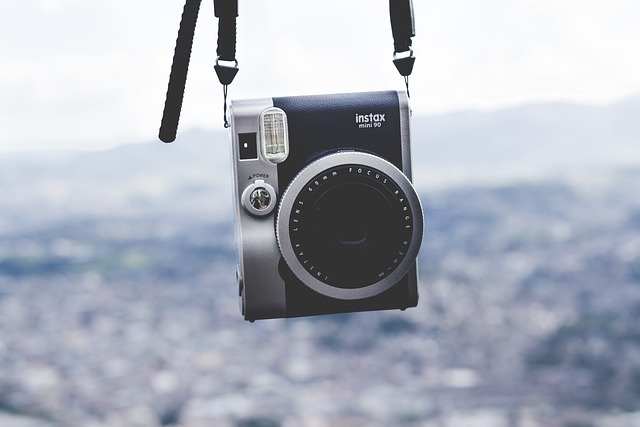
Ensure the clips are securely fastened by pressing them until they click into place. For threaded straps, thread one end of the strap through one metal loop, pulling it through until it is secure. Repeat this process for the second end of the strap, threading it through the remaining metal loop. Ensure the strap is securely attached and does not shift or loosen.
5. Adjust the Strap Length
Once the strap is attached, adjust its length to suit your personal preference and comfort. Most straps come with adjustable length features such as sliding buckles or adjustable loops.
Set the length so that the camera hangs comfortably by your side or across your body, depending on how you prefer to carry it.
An adjustable strap allows you to customize the fit, ensuring that it is neither too short nor too long. Proper adjustment helps in maintaining comfort and prevents the camera from swinging excessively while you move.
6. Check for Proper Alignment and Security
After adjusting the strap, check that it is properly aligned and securely attached. Ensure that the strap does not interfere with the camera’s controls, buttons, or film compartment.
Here, how to put straps on nikon monarch.
Verify that the strap is not twisted or kinked, as this could affect its functionality and comfort. Gently tug on the strap to test its stability, ensuring that it remains firmly attached to the metal loops. Proper alignment and security are crucial to prevent any accidental drops or damage to the camera while using it.
7. Test the Attachment
Before fully relying on the strap, perform a thorough test to ensure its attachment is secure and reliable. Hold the camera by the strap and gently shake it to check if the strap holds firm and does not detach.
Test the camera’s movement to ensure the strap allows for easy handling and doesn’t obstruct the camera’s functions. Make any necessary adjustments to the strap length or attachment if you notice any issues during the test. This final check ensures that the strap will provide reliable support and comfort while using the camera.
5 Methods to attach strap to instax mini Evo
1. Clip Attachment
Using a strap with clips is a quick and secure method for attaching it to your Instax Mini Evo. Simply open the clips on each end of the strap and hook them onto the metal loops on the camera.
Ensure the clips click into place and are securely fastened. This method is straightforward and allows for easy removal or adjustment of the strap when needed.
It’s ideal for users who prefer a hassle-free attachment process and want to switch straps frequently.
2. Threaded Attachment
For straps designed to be threaded, insert one end of the strap through one of the metal loops on the camera. Pull the strap through until it is secure, then repeat the process with the other end and the remaining loop.
This method is often used for straps without clips and requires ensuring that the strap is threaded straight and securely fastened. It’s important to check that the strap is not twisted or kinked, which can affect comfort and functionality.
3. Detachable Ring Attachment
Some straps come with detachable rings that make it easy to attach and remove them from the camera. Attach the rings to the metal loops on the Instax Mini Evo by sliding them into place.
Then, connect the strap to the rings. This method provides flexibility as you can quickly swap out different straps or remove them when not needed. Ensure the rings are securely fastened and that the strap is properly connected to avoid any issues during use.
4. Adjustable Buckle Attachment
If your strap features adjustable buckles, first connect the strap’s end to the metal loop on the camera.
Then, use the buckle to secure the strap in place by sliding it through the buckle slot and adjusting it to the desired length.
This method allows for easy length adjustments and ensures the strap is firmly attached. It is useful for customizing the strap fit and providing additional comfort. Make sure the buckle is fully engaged to prevent any slippage or detachment.
5. Hook and Loop Attachment
Some camera straps use a hook-and-loop (Velcro) system for attachment. Attach the strap’s hooks to the metal loops on the camera and secure them using the Velcro closure.
This method provides a strong and adjustable attachment, with the ability to easily detach or adjust the strap’s length as needed. It’s essential to ensure that the Velcro is firmly pressed together and that the hooks are fully engaged to ensure a stable and secure hold.
5 Benefits to attach strap to instax mini Evo
1. Improved Camera Security
Attaching a strap to your Instax Mini Evo significantly enhances camera security. The strap prevents accidental drops and helps keep the camera securely in your hand or around your neck.
This added security is particularly useful when taking photos in busy or crowded environments, reducing the risk of damage from sudden slips or bumps.
By having a strap, you can focus on capturing moments without worrying about the potential for dropping your camera, thus prolonging its lifespan and maintaining its functionality.
2. Enhanced Portability
A strap makes carrying your Instax Mini Evo much easier and more comfortable. Whether you choose to hang it around your neck, across your body, or attach it to a bag, the strap allows for hands-free transport.
This enhanced portability is ideal for travel, events, or casual outings, enabling you to keep the camera readily accessible while freeing up your hands for other activities.
It improves overall convenience and ensures you can quickly grab the camera whenever a photo opportunity arises.
3. Increased Comfort
Using a strap can greatly increase your comfort while using the Instax Mini Evo. An adjustable strap allows you to customize the length for a perfect fit, reducing strain on your neck or shoulders.
For those who carry their camera for extended periods, a padded or ergonomically designed strap can provide additional support and reduce fatigue.
This increased comfort enhances the overall photography experience, making it easier to use the camera for longer sessions without discomfort or pain.
4. Better Accessibility
Attaching a strap to your Instax Mini Evo ensures better accessibility and quick readiness for photo opportunities.
With the camera securely hanging from your neck or shoulder, you can swiftly reach for it and start taking pictures without fumbling around.
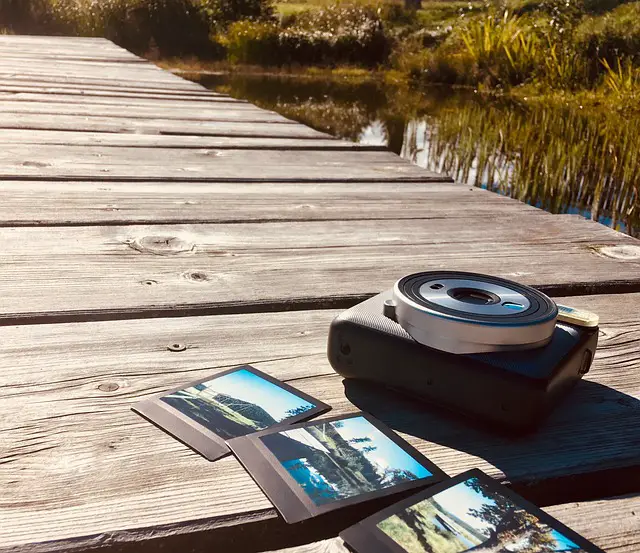
This is particularly beneficial in dynamic situations where capturing spontaneous moments is crucial. The strap keeps the camera within easy reach, allowing for more efficient and timely photo-taking, and ensuring you don’t miss important shots.
5. Stylish Customization
A strap offers an opportunity for personal expression and style customization. Straps come in various designs, colors, and materials, allowing you to choose one that matches your personal taste or complements your camera gear.
Whether you prefer a sleek leather strap, a vibrant patterned design, or a sporty adjustable strap, it can enhance the aesthetic appeal of your Instax Mini Evo.
Customizing the strap not only adds a personal touch but also makes your camera stand out and reflect your unique style.
Related faq’s
How do I choose the right strap for my Instax Mini Evo?
When selecting a strap for your Instax Mini Evo, look for one that is compatible with the small metal loops on the sides of the camera. Choose a strap made from durable materials like nylon or leather and ensure it has adjustable length for comfort.
Consider straps designed specifically for cameras to ensure they fit properly and provide the required support. Also, check if the strap features clips, rings, or a threaded design based on your preference for ease of attachment and removal.
Can I use any strap with my Instax Mini Evo?
Not all straps are suitable for the Instax Mini Evo. Ensure the strap you choose is designed to fit the small metal loops on the camera. Straps with clips or those that can be threaded through the loops work best.
Avoid using straps that are too thick or wide, as they may not fit properly or could obstruct the camera’s controls. Always check the strap’s specifications to confirm compatibility with the Instax Mini Evo.
How do I attach a strap with clips to the Instax Mini Evo?
To attach a strap with clips, open each clip and hook it onto the metal loops on the sides of the Instax Mini Evo. Ensure the clips are securely fastened and click into place.
This method is quick and allows for easy attachment and detachment of the strap. Verify that the clips are firmly in place to prevent the strap from coming loose during use.
What is the best way to thread a strap onto the Instax Mini Evo?
To thread a strap, insert one end of the strap through one of the metal loops on the Instax Mini Evo. Pull it through until secure, then repeat with the other end of the strap and the remaining loop.
Ensure the strap is threaded straight and not twisted. This method provides a secure attachment but requires ensuring the strap is snug and properly aligned for comfortable use.
How can I adjust the strap length on my Instax Mini Evo?
Most camera straps have adjustable features such as sliding buckles or loops. After attaching the strap, adjust the length by sliding the buckle or adjusting the loops to your desired fit.
The strap should be long enough to carry comfortably but not so long that it causes excessive swinging. Proper adjustment ensures comfort and functionality, making it easier to handle the camera while on the go.
Here, is camera bag allowed to phillipines?
What should I do if the strap doesn’t fit the metal loops?
If the strap doesn’t fit the metal loops on your Instax Mini Evo, check the strap’s design to ensure it’s compatible with the loop size. Some straps might be too wide or have incompatible hardware.
Consider using a different strap designed specifically for cameras or one with adjustable or detachable features. Alternatively, you can use strap adapters that might help fit non-standard straps to the camera’s loops.
How do I ensure the strap is securely attach to my Instax Mini Evo?
To ensure the strap is securely attach, check that it is properly connected to the metal loops and that any clips or buckles are firmly fastened.
If using a threaded strap, make sure it is not twisted and is pulled tightly through the loops.
Test the attachment by gently tugging on the strap to ensure it holds firm. Regularly inspect the strap and attachment points for any signs of wear or looseness to maintain secure use.
Conclusion
Attaching a strap to your Instax Mini Evo is a simple yet crucial process for enhancing convenience and ensuring camera security.
By selecting a compatible strap—whether with clips, threaded ends, or adjustable features—you can easily attach it to the metal loops on the camera.
Proper attachment involves securing the strap firmly, adjusting its length for comfort, and ensuring it does not obstruct camera functions.
Regularly check the strap’s stability and condition to maintain a reliable connection. With the right strap and secure attachment, you can carry your Instax Mini Evo comfortably and confidently, ready for capturing memorable moments.

